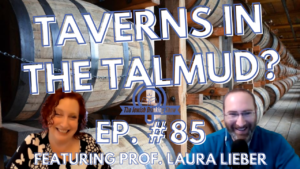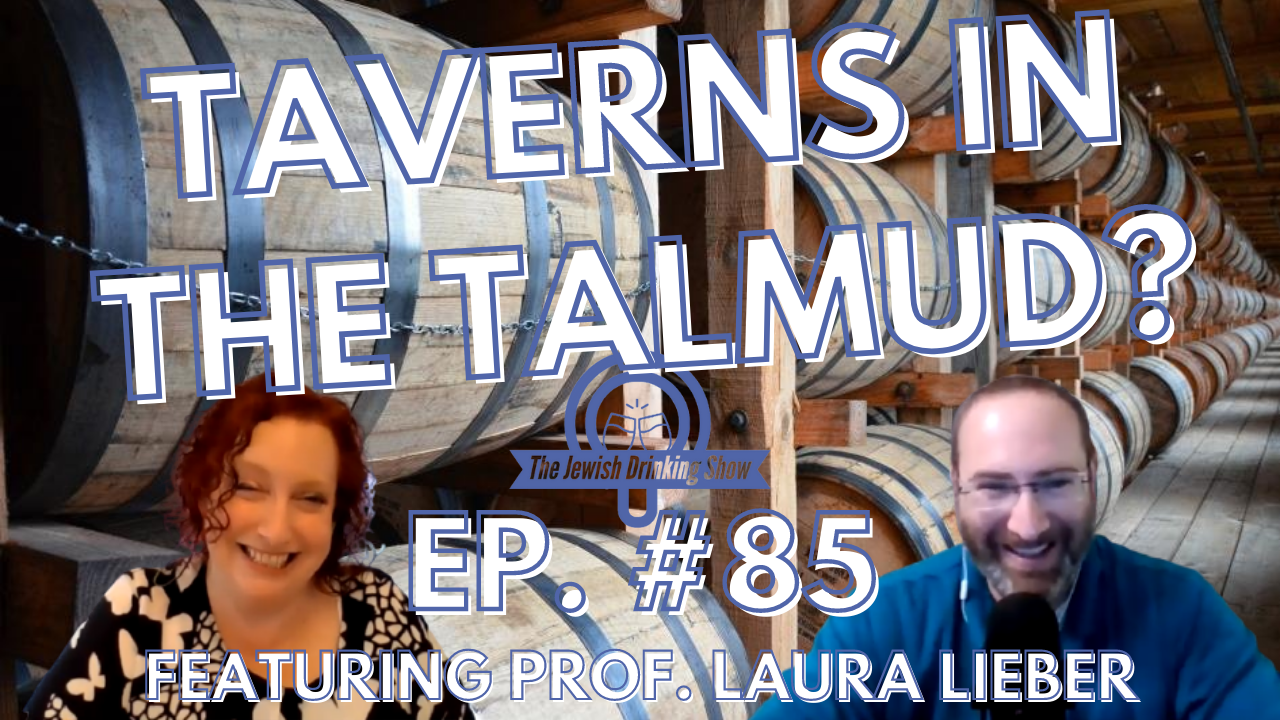Taverns in the Talmud? Dancing at taverns in the Talmud? Yes, this is certainly a curious topic.
We don’t often think about taverns in the Talmud, but I was struck by Professor Laura Lieber’s discussion of the term בי כובי in her “Daru in the Winehouse: The Intersection of Status and Dance in the Jewish East”, The Journal of Religion, vol. 98, no. 1 (January 2018): 90-113, and I thought about how the phrase בית משתה, drinking house, is found in earlier rabbinic texts (and discussed on episode 55 of The Jewish Drinking Show on this term in the Mishnah and Tosefta).
Prof. Lieber is a Professor of Religious studies at Duke University. Having earned her PhD from the University of Chicago, her primary area of research is in the area of Synagogue Poetry (“piyyut”) from Late Antiquity and the Byzantine period, examining them from a variety of perspectives, including literary, performative, and comparative (particularly with early Christian Hymnography in Syriac and Greek), and also as a genre of early Jewish biblical interpretation. In recent years, she has begun to integrate the study of material culture into her analysis of these literary works, as part of taking a more fully “contextual” approach to literary analysis.
Episode 85 of The Jewish Drinking Show featuring Prof. Lieber on Taverns in the Talmud is available on podcasting platforms, as well as on YouTube:
Proposed Outline
- Introduction
- Introduction to the guest
Drew: For those who are less familiar with Prof. Lieber, she is a Professor of Religious studies. Having earned her PhD from the University of Chicago (go, Maroons!), her primary area of research is in the area of Synagogue Poetry (“piyyut”) from Late Antiquity and the Byzantine period, examining them from a variety of perspectives, including literary, performative, and comparative (particularly with early Christian Hymnography in Syriac and Greek), and also as a genre of early Jewish biblical interpretation. In recent years, she has begun to integrate the study of Material culture into my analysis of these literary works, as part of taking a more fully “contextual” approach to literary analysis.
- Introduction to the topic
Drew: We don’t often think about taverns in the Talmud, but I was struck by Prof. Lieber’s discussion of the term בי כובי in her “Daru in the Winehouse: The Intersection of Status and Dance in the Jewish East”, The Journal of Religion, vol. 98, no. 1 (January 2018): 90-113, and I thought about how the phrase בית משתה, drinking house, is found in earlier rabbinic texts (for the dedicated listeners, you may remember ep. 55 of The Jewish Drinking Show, in which Prof. Jordan Rosenblum was the featured guest in our discussion of this term in the Mishnah and Tosefta).
- Discussion of the Topic
- While that term of בית משתה, the drinking house, is found in tannaitic/earlier rabbinic literature – in Hebrew – we also encounter another term – in Aramaic, that of בי כובי, a house of vessels/casks
- While this term doesn’t appear altogether that frequently, it does appear in several places
- Taverns
- Bava Kama 86a (dancing in the tavern), 97a (Rav Yosef bar Ḥama’s son said to him: I will say that Rav Naḥman said this with regard to specific slaves, such as his slave Daru, who only dances among the wine barrels [kuvei] and does not perform any labor. )
- Bava Metzia 64b (Rava said to him: I will say that Rav Naḥman said this with regard to specific slaves, such as his slave Dari, who only dances among the wine barrels [khuvei] and does not perform any labor.)
- Pesahim 49a (Rava said: His son will be called the son of the one who dances in inns [bei kuvei], as he seems to be invited to every feast to entertain the guests. (referring to previous text: The Sages taught: Any Torah scholar who feasts excessively everywhere degrades himself and brings suffering upon himself. He will ultimately destroy his house, widow his wife, orphan his chicks, i.e., his children, and his studies will be forgotten. Much dispute will come upon him, his words will not be heeded, and he will desecrate God’s name and the name of his master and the name of his father. And he will cause a bad name for himself, his children, and his descendants throughout future generations.))
- Town
- Gittin 4a (And Rabba bar bar Ḥana said: I myself saw that place, i.e., the distance between the village of Ludim and Lod, and it was similar to the distance from Bei Kuvei to Pumbedita, which is only a short distance.)
- Ketubot 111a (Rabba and Rav Yosef both say: “Even to go from Pumbedita to Bei Kuvei, which is located beyond the border of Babylonia proper, is not permitted.” A certain man left Pumbedita to live in Bei Kuvei, and Rav Yosef excommunicated him. )
- Megillah 6a (Rabba bar bar Ḥana said: “Rabbi Yoḥanan said: ‘I myself have seen the land flowing with milk and honey over all of Eretz Yisrael. And the size of the fertile land was like the distance from Bei Kovei to the fortress of Tulbakni, a total of twenty-two parasangs [parsa] in length and six parasangs in width.’” )
- Sukkah 26b (Abaye would sleep during the day for a period equivalent to the time it takes to enter from Pumbedita to Bei Kuvei.)
- Kiddushin 70b (Rav Yosef says: With regard to this place called Bei Kuvei of Pumbedita, its residents are all descendants of slaves.)



